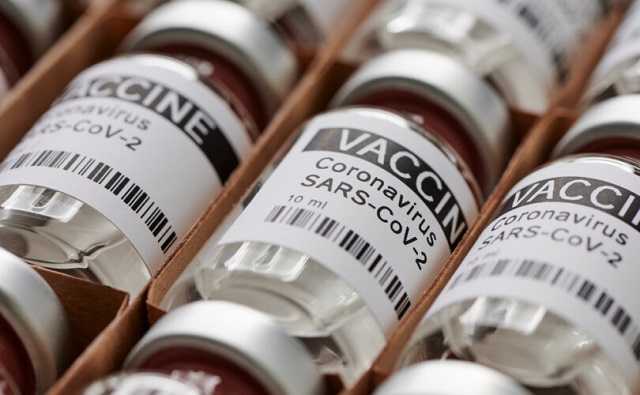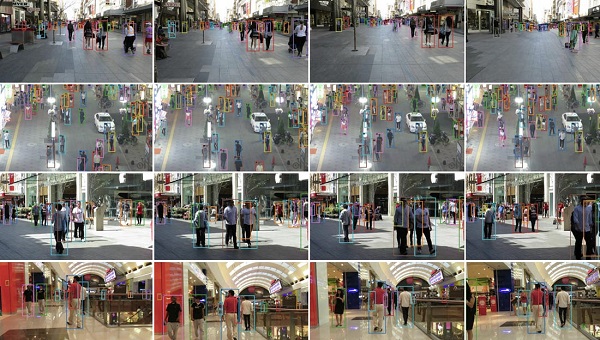COVID-19
‘Highly improbable’: New study exposes flaws in Lancet paper claiming COVID vaccines saved millions of lives

From LifeSiteNews
A new study by all-cause mortality researchers Denis Rancourt, Ph.D., and Joseph Hickey, Ph.D., re-examined the mathematical model behind a paper published in The Lancet claiming the COVID-19 vaccines saved millions of lives. The Lancet paper, cited more than 700 times, was partially funded by the World Health Organization and the Bill & Melinda Gates Foundation.
This article was originally published by The Defender — Children’s Health Defense’s News & Views Website.
When two University of Pennsylvania scientists earlier this month won the 2023 Nobel Prize in Physiology or Medicine for their work in developing “effective mRNA vaccines against COVID-19,” the Nobel Committee and legacy media organizations celebrated the COVID-19 vaccines for saving “millions of lives.”
But a new study re-examining the mathematical model behind the life-saving claims – a model that was laid out in a study published in 2022 in The Lancet Infectious Diseases – concluded the model was deeply flawed and the resulting characterization of the COVID-19 vaccines “must be invalid.”
The Lancet paper, funded by the World Health Organization (WHO) Gavi, the Vaccine Alliance and the Bill & Melinda Gates Foundation, among others, has been cited more than 700 times.
All-cause mortality researchers Denis Rancourt, Ph.D., and Joseph Hickey, Ph.D., calculated and graphed the mortality rates that would have occurred without the vaccines, as projected by Waston et al. in The Lancet study, and compared those projections to the actual all-cause mortality rates.
Rancourt and Hickey tested the assertions in The Lancet paper that the vaccines averted tens of millions of excess deaths, defined as the number of deaths from all causes that exceeds the expected number of deaths under normal conditions.
If The Lancet paper model were accurate, Rancourt and Hickey wrote, without the vaccines the global mortality rates would have spiked to historically unprecedented and unimaginable levels suddenly, a year into the pandemic, at precisely the moment the vaccines rolled out.
And the vaccines would have nearly perfectly reduced those unimaginable levels of mortality back to baseline mortality rates.
They concluded that Watson et al.’s “results and the associated fantastic claims of millions of lives saved are highly improbable,” and that their theoretical claims have “no connection to actual mortality,” but instead are based on “wild” assumptions.
The findings raise questions about the serious failures of the peer review process in top journals, the Nobel award process and the media’s verification processes, according to the authors, who are both part of the Canada-based Correlation Research in the Public Interest.
‘So improbable it should be qualified as impossible’
According to Rancourt and Hickey, given there is no known controlled randomized clinical trial showing the COVID-19 vaccines caused death to be averted, the primary basis for such claims comes from Watson et al., who concluded:
“[Findings] Based on official reported COVID-19 deaths, we estimated that vaccinations prevented 14·4 million (95% credible interval [Crl] 13·7–15·9) deaths from COVID-19 in 185 countries and territories between Dec 8, 2020, and Dec 8, 2021.
“This estimate rose to 19·8 million (95% Crl 19·1– 20·4) deaths from COVID-19 averted when we used excess deaths as an estimate of the true extent of the pandemic …
“[Interpretation] COVID-19 vaccination has substantially altered the course of the pandemic, saving tens of millions of lives globally.”
To test the validity of the model’s projections, Rancourt and Hickey used Watson et al.’s data to calculate what the all-cause mortality would have been over time for 95 countries if the researchers’ claims were true and no COVID-19 vaccines were administered.
To compare the implications of those claims to actual all-cause mortality, they distributed the paper’s most conservative estimate of “14.4 million deaths averted” globally, calculating the number of deaths averted per country as a mathematical combination over time of vaccines administered and vaccine effectiveness.
They created graphs to show how Watson et al.’s theoretical all-cause mortality rates without the vaccine compared to actual all-cause mortality rates.
The graphs also show all-cause mortality rates prior to the pandemic and note the date the WHO declared the global pandemic and the date of the vaccine rollouts for each country.
In the U.S., for example (Figure 1), there were unprecedented peaks in all-cause mortality in 2020, 2021 and 2022 that the researchers have tied, in other papers, to pandemic measures such as the widespread use of ventilators, and to mortality associated with the vaccine itself.
Those peaks can be seen in the blue line on the graph, which shows the actual all-cause mortality. The projected scenario from Watson et al’.s paper is plotted in red.


Figure 1. United States (USA): (top panel) All-cause mortality by week, 2018-2022, measured (blue), calculated following Watson et al. (2022) (red-solid), continued (red-dashed); (bottom panel) same, expressed as excess all-cause mortalities, and with 1σ uncertainty (shaded blue). In both panels, cumulative COVID-19 vaccine administration (all-doses) (dark grey), March 11, 2020 date, (vertical grey line). Credit: Denis Rancourt, Ph.D., and Joseph Hickey, Ph.D.
If their numbers are correct, the graph shows, a “massive and more-than-unprecedented” national excess mortality would have occurred if the COVID-19 vaccines had not been rolled out, and that spike would have coincidentally happened at precisely the moment when the rollout happened to occur, but not before.
“This would be a remarkable coincidence,” Rancourt and Hickey wrote, especially given this spike would have happened suddenly after several waves of infection and one year after the pandemic was declared.
It is also notable, they said, that the vaccines supposedly lowered all-cause mortality rates to precisely the pre-pandemic numbers, rather than to some intermediary number.
A similar phenomenon would have happened, they said, in Canada according to Watson et al.’s calculations. Unlike the U.S., Canada had very minimal changes in all-cause mortality through the entire pandemic period.
However, the calculations by Watson et al. predict that Canada would have seen a tripling in all-cause mortality by week for approximately a year if the vaccines had not been rolled out, the authors wrote.


Figure 2. Canada (CAN): (top panel) All-cause mortality by week, 2018-2022, measured (blue), calculated following Watson et al. (2022) (red-solid), continued (red-dashed); (bottom panel) same, expressed as excess all-cause mortalities, and with 1σ uncertainty (shaded blue). In both panels, cumulative COVID-19 vaccine administration (all-doses) (dark grey), March 11, 2020, date (vertical grey line). Credit: Denis Rancourt, Ph.D., and Joseph Hickey, Ph.D.
In Canada, there is also “no visible decrease in actual all-cause mortality” temporally associated with the roll-outs, which one might expect if the roll-outs affected mortality. Rather, they wrote, “the opposite is apparent, with excess mortality proportionately accompanying rollouts.”
They also presented data from 31 European countries, whose situation was analogous to the U.S. “This extraordinary coincidence” they wrote, “essentially occurs in most of 95 countries [they analyzed].”
“In fact, the said coincidence is palpably so improbable that it should, without hesitation, be qualified as impossible,” Rancourt and Hickey wrote. “A single such example in a single country is sufficient to invalidate the exercise of Watson et al. (2022), and the example is repeated for 95 countries.”
‘The opposite of good science’
Rancourt, former physics professor and lead scientist for 23 years at the University of Ottawa, told Children’s Health Defense Staff Scientist J. Jay Couey, Ph.D., on a recent episode of Couey’s Gigaohm Biological livestream, that the Nobel Prize is a powerful political instrument.
Although there are some exceptions where Nobel has recognized authentically important scientific achievements, he said, “Generally speaking the Nobel Prize is an instrument of the establishment for propaganda, to convince people of what things they need to consider to be absolutely true, absolute advancements of human knowledge.”
“It impacts not only the general public but also scientists themselves,” in terms of what they believe and what they research, Rancourt said.
When the 2023 Nobel Prizes were announced, and the legacy media universally made claims about tens of millions of lives saved, Rancourt and Hickey decided to investigate the publication behind the claims: the Waston 2022 paper.
He said they found the paper was “the opposite of good science.”
That was not, Rancourt noted, because the mathematical calculations were wrong, but because the authors made no attempt to examine whether the assumptions behind their model inputs were logical, or whether their predictions were “reasonable and realistic,” meaning they could occur in the real world.
Rancourt told Couey after doing their analysis, he and his colleagues found the claims in the paper were so “stunning” it led them to question:
How did this get through peer review? … Who were these reviewers? How could they be so blind and incompetent and unquestioning of what some authors are doing, which is completely novel and completely fabricated? … Are they not able to see it?
And on the other hand, what about the editors? How do the editors pick these reviewers? Did the editors go with only the reviewers that thought it was okay and ignore the reviewers that were critical of it? Are they themselves so scientifically illiterate [they cannot] do a theoretical calculation?
Scientists, he said, particularly when one is doing theoretical projections, must constantly critically interrogate their own results.
“They have to be critical of their own ideas, not just rub their hands because they get something that Gates will like,” he said.
Worse, he said, “the Nobel Prize Committee itself had to be clueless, had to be unscientific, had to be unquestioning, had to look for something, a prize they wanted to give, and not bother thinking for themselves about whether or not this made any sense. And then they repeated this ‘millions of lives saved’ thing, which is nonsense.”
As a result, a “horrendous product that should never have been injected into people’s bodies, is now something that we’re going to celebrate. It’s going to be an achievement of human science, of the science created by humans.”
“There is no scientific basis for saying that whatsoever,” Rancourt said. “No clinical trials have ever demonstrated that. And it’s based on a garbage simulation funded by the industry, where the authors didn’t even double check if their results made any kind of sense.”
“This is the absurdity that we are now experiencing,” he said.
This article was originally published by The Defender – Children’s Health Defense’s News & Views Website under Creative Commons license CC BY-NC-ND 4.0. Please consider subscribing to The Defender or donating to Children’s Health Defense.
COVID-19
Canadian Health Department funds study to determine effects of COVID lockdowns on children

From LifeSiteNews
The commissioned study will assess the impact on kids’ mental well-being of COVID lockdowns and ‘remote’ school classes that banned outdoor play and in-person learning.
Canada’s Department of Health has commissioned research to study the impact of outdoor play on kids’ mental well-being in light of COVID lockdowns and “remote” school classes that, for a time, banned outdoor play and in-person learning throughout most of the nation.
In a notice to consultants titled “Systematic Literature Reviews And Meta Analyses Supporting Two Projects On Children’s Health And Covid-19,” the Department of Health admitted that “Exposure to green space has been consistently associated with protective effects on children’s physical and mental health.”
A final report, which is due in 2026, will provide “Health Canada with a comprehensive assessment of current evidence, identify key knowledge gaps and inform surveillance and policy planning for future pandemics and other public health emergencies.”
Bruce Squires, president of McMaster Children’s Hospital of Hamilton, Ontario, noted in 2022 that “Canada’s children and youth have borne the brunt” of COVID lockdowns.
From about March 2020 to mid-2022, most of Canada was under various COVID-19 mandates and lockdowns, including mask mandates, at the local, provincial, and federal levels. Schools were shut down, parks were closed, and most kids’ sports were cancelled.
Mandatory facemask polices were common in Canada and all over the world for years during the COVID crisis despite over 170 studies showing they were not effective in stopping the spread of COVID and were, in fact, harmful, especially to children.
In October 2021, then-Prime Minister Justin Trudeau announced unprecedented COVID-19 jab mandates for all federal workers and those in the transportation sector, saying the un-jabbed would no longer be able to travel by air, boat, or train, both domestically and internationally.
As reported by LifeSiteNews, a new report released by the Justice Centre for Constitutional Freedoms (JCCF) raised alarm bells over the “harms caused” by COVID-19 lockdowns and injections imposed by various levels of government as well as a rise in unexplained deaths and bloated COVID-19 death statistics.
Indeed, a recent study showed that COVID masking policies left children less able to differentiate people’s emotions behind facial expressions.
COVID vaccine mandates and lockdowns, which came from provincial governments with the support of the federal government, split Canadian society.
COVID-19
Ontario student appeals ruling that dismissed religious objection to abortion-tainted COVID shot

From LifeSiteNews
An Ontario Tech University student is seeking judicial review after the Human Rights Tribunal of Ontario ruled his beliefs did not qualify as protected ‘creed.’
An Ontario university student who was punished for refusing the COVID shot is contesting a tribunal ruling that rejected his religious objection to the vaccine.
In a November 28 press release, the Justice Centre for Constitutional Freedoms (JCCF) announced that a judicial review has been filed on behalf of former Ontario Tech University student Philip Anisimov after his religious objection to the COVID vaccine was dismissed by an Ontario court.
“Mr. Anisimov’s objection to the Covid vaccine was deeply rooted in his religious commitment to live according to biblical precepts,” Constitutional lawyer Hatim Kheir declared. “He hopes the Divisional Court will clarify that his religious objection was protected by the Human Rights Code and entitled to protection.”
In 2021, Ontario mandated that all students in the province show proof of vaccination unless they had an exemption or agreed to attend a COVID jab education session boasting about the shots. The third option was not available at Ontario Tech University, as schools could choose whether or not they would offer such a program to students.
Anisimov had requested an exemption from the experimental, abortion-tainted COVID shots on religious grounds but was denied and deregistered from his courses.
He was then forced to spend an entire extra year to complete his studies. According to his lawyers, Ontario Tech University’s decision to not approve his COVID jab exemption request “not only disrupted his career plans but also violated his right to be free from discrimination on the basis of religion, as protected by the Ontario Human Rights Code.”
The university’s refusal to honor his exemption prompted Anisimov to take legal action in April with help of the JCCF. However, the Human Rights Tribunal of Ontario rejected his religious objection, arguing that it was not protected as a “creed” under the Ontario Human Rights Code.
Now, Anisimov is appealing the ruling, hoping that his case will serve as a precedent for justice for students who were discriminated against for refusing the abortion-tainted vaccine.
“My hope is that this case helps set an important precedent and encourages Canadians to reflect on the direction our society is taking,” he explained. “My trust is that God does all things for the good of those who love Him, who are called by His purposes.”
COVID vaccine mandates, as well as lockdowns that came from provincial governments with the support of the federal government, split Canadian society. The mRNA shots have been linked to a multitude of negative and often severe side effects in children.
Beyond health concerns, many Canadians, especially Catholics, opposed the vaccines on moral grounds because of their link to fetal cell lines derived from the tissue of aborted babies.
-

 Bruce Dowbiggin1 day ago
Bruce Dowbiggin1 day agoWayne Gretzky’s Terrible, Awful Week.. And Soccer/ Football.
-

 Business1 day ago
Business1 day agoCanada invests $34 million in Chinese drones now considered to be ‘high security risks’
-

 Opinion2 days ago
Opinion2 days agoThe day the ‘King of rock ‘n’ roll saved the Arizona memorial
-

 Focal Points2 days ago
Focal Points2 days agoCommon Vaccines Linked to 38-50% Increased Risk of Dementia and Alzheimer’s
-

 espionage1 day ago
espionage1 day agoWestern Campuses Help Build China’s Digital Dragnet With U.S. Tax Funds, Study Warns
-

 Health1 day ago
Health1 day agoCDC Vaccine Panel Votes to End Universal Hep B Vaccine for Newborns
-

 Business1 day ago
Business1 day agoThe EU Insists Its X Fine Isn’t About Censorship. Here’s Why It Is.
-

 Agriculture1 day ago
Agriculture1 day agoCanada’s air quality among the best in the world









